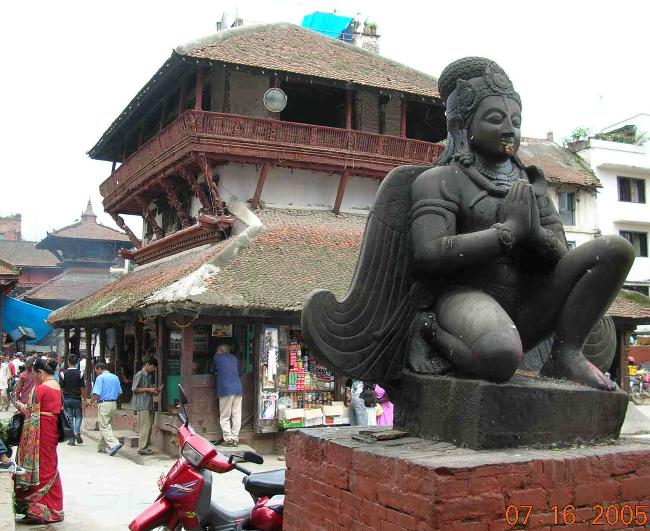The nation of Nepal may be most known for having Mount Everest, but a devastating 7.8-magnitude earthquake has ravaged the nation and the death toll is now reported to be nearing 4,000. This quake was strong enough that it destroyed many buildings, and aftershocks have left many in Nepal fearing to go back into buildings. The destruction is almost certain to severely hamper what is already a weak local economy.
24/7 Wall St. wanted to look at the Nepali economy by the numbers, using data from the CIA World Factbook and from the Economist.
Population is 30,986,975 (July 2014 est.). Some 31.6% of the population is aged 14 and younger, with 22.6% being ages 15 to 24, and another 35.7% aged 25 to 54 years old. Only 5.6% of the population is 55 to 64 years old, and only 4.5% is age 65 or older. This population ranks as number 42 in the world. Its labor force is shown to be roughly 14.76 million, with a severe lack of skilled labor.
Gross domestic product (GDP), under the purchasing power parity calculation, was shown by the CIA World Factbook as roughly estimated at $66.92 billion in 2014 (number 97 in the world). That would compare to estimates of $63.44 billion in 2013, and $61.09 billion in 2012. GDP at the official exchange rate was shown to be $19.64 billion in 2014. Per capita GDP is very low, at $2,400 in 2014 (ranking 197 in the world).
Inflation has been an issue in Nepal, but perhaps getting better — at 8.4% in 2014, after being 10.2% in 2013.
The market value of its publicly traded shares was listed as being only $9.671 billion as of October 31, 2014. That compared to $5.812 billion in the same time in 2013 and to $5.235 billion in 2010.
ALSO READ: The Healthiest (and Least Healthy) Countries in the World
Imports and exports are out of line. Exports were estimated at $1.124 billion in 2014, up from $991.5 million in 2013. Imports were shown to be $7.282 billion in 2014 and $6.5 billion in 2013. Nepal’s export partners are India (53.7%), United States (9.2%), China (4.9%), Germany (4.2%) and Bangladesh (4.2%). Nepal’s import partners are India (50.6%) and China (35.0%).
Nepal’s reserves of foreign exchange and gold were estimated at $5.439 billion as of the end of 2013 and $4.434 billion as of the end of 2012.
The CIA World Factbook calls Nepal one of the poorest and least developed countries in the world. About one-fourth of the population is said to be live below the poverty line.
Nepal is shown to be heavily dependent on remittances, which amount to as much as 22% to 25% of GDP. Agriculture is the mainstay of the economy, which supports over 70% of the population but accounts for a little over one-third of GDP. Nepal’s industrial activity is shown to be focused on the processing of agricultural products, including pulses, jute, sugarcane, tobacco and grain. The rest of the national economic picture is described as follows:
Nepal has considerable scope for exploiting its potential in hydropower, with an estimated 42,000 MW of commercially feasible capacity, but political uncertainty and a difficult business climate have hampered foreign investment. Additional challenges to Nepal’s growth include its landlocked geographic location, persistent power shortages, underdeveloped transportation infrastructure, civil strife and labor unrest, and its susceptibility to natural disaster. The lack of political consensus in the past several years has delayed national budgets and prevented much-needed economic reform, although the government passed a full budget in 2013 and 2014. Nepal and India signed trade and investment agreements in 2014 that will amp up Nepal’s hydropower potential.
ALSO READ: Countries That Hate America the Most
Credit Card Companies Are Doing Something Nuts
Credit card companies are at war. The biggest issuers are handing out free rewards and benefits to win the best customers.
It’s possible to find cards paying unlimited 1.5%, 2%, and even more today. That’s free money for qualified borrowers, and the type of thing that would be crazy to pass up. Those rewards can add up to thousands of dollars every year in free money, and include other benefits as well.
We’ve assembled some of the best credit cards for users today. Don’t miss these offers because they won’t be this good forever.
Flywheel Publishing has partnered with CardRatings for our coverage of credit card products. Flywheel Publishing and CardRatings may receive a commission from card issuers.
Thank you for reading! Have some feedback for us?
Contact the 24/7 Wall St. editorial team.





